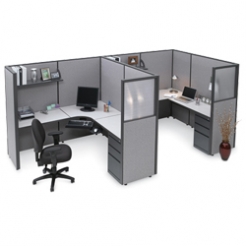 The year is 1990-something and you are sitting at your workstation.
The year is 1990-something and you are sitting at your workstation.
In front of you is your big, bulky cathode ray computer screen, which is connected via cables to a personal computer tower that lies on the floor next to your desk.
There’s also a landline phone, a Fax machine, your all-important Rolodex, and a few framed pictures of your family and friends. Maybe there’s a few work-related manuals on your shelf, as well as a well-thumbed dictionary, a thesaurus, and some other reference materials.
Flash Forward to Now
Slash-edit to the present. You’re once again at your work place. Except this time, there’s no computer, no Fax, no phone, no Rolodex and not even any pictures. In fact, you’re not even at your desk.
You could be on the floor of your factory or warehouse, in your car, or even at home. And yet you are about 1,000% more productive.
Future Shock
The value of this exercise is to show how far we’ve come in a relatively short period of time. In less than decade or two, the concept of the workspace has undergone a revolutionary change.
Thanks to advances in technology, office workers are no longer tied down to a desk … or even an office.
They can work on documents, interact with co-workers or customers, and even supervise operations from anywhere using their smartphones, tablets and other devices, which can also store home, work and cell phone numbers, email addresses, social media contacts and other information, where it can be instantly accessed from anywhere.
Everone’s Connected to Everything
Today’s office workers can use these same devices to call their contacts, or even text or video chat with them to save time. Meetings can be conducted via video conferencing software like Hangouts, FaceTime or GoToMeeting.
That means workers can be more mobile than ever before. And their jobs can be more flexible. Because many employees no longer rely upon a centralized office to complete their job duties, there’s less need for traditional office space as more and more people can work from home or even on the go.
Modular, Multi-User Workstations
Meanwhile, companies that still do maintain offices are shifting toward modular workstations that can be used by multiple people — including clerical workers, supervisors, and even clients — often during the same work day.
Today’s bare bones workstations include a desk, a chair, a charger and an Internet connection and not much else because nothing else is needed. And they don’t even need to be located in a company’s office. Identical workstations that offer the same full functionality can now be found in airports, storefronts and in homes.
Even files cabinets and even desk drawers for storing office supplies are now obsolete. And there’s no need to hang family photos or other personal items because your mobile device can now store virtually thousands of photos, images, and even videos that you can access anytime you like.
The Future Is Now
It’s fun to imagine what those 1990s versions of ourselves would think of today’s futuristic offices.
But it’s even more mind-blowing to think what workstations will look like another decade or two from now!
